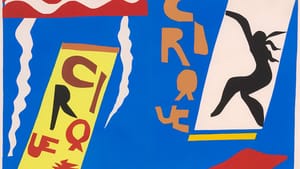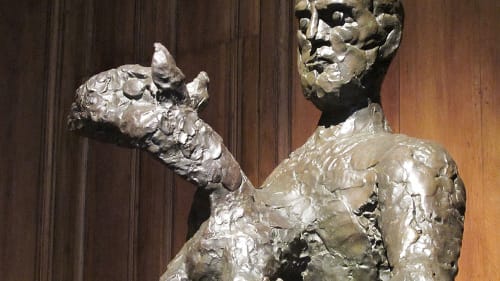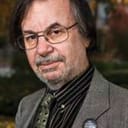Stay in the Loop
BSR publishes on a weekly schedule, with an email newsletter every Wednesday and Thursday morning. There’s no paywall, and subscribing is always free.
Two greats in three dimensions
Picasso's sculptures and Matisse's books in New York

Pablo Picasso is the Proteus of modern art: Just when you think you know him, he surprises you again. There was no medium in the plastic arts he did not transform, and none he did not attack with polymorphic zest. What Cézanne did for the eye of the 19th century, Picasso did for the 20th, but while the French master carefully dis- and reassembled our everyday experience, Picasso blasted, bombarded, and re-formed it as objects that were utterly new. Some of them are 100 years old now, and banalized by endless commercial reproduction, but come to them in the flesh again, and they still radiate their original energy and vitality. Picasso grows familiar; he never grows old.
Picasso’s secret is that he was a great abstractionist who refused to abandon representation. I’ve invoked Proteus, the shape-shifter of Greek mythology whose appearance constantly changed, but one should also mention Antaeus, the giant whose strength was anchored in the fact that he always kept one foot on solid ground. In Picasso’s analytic cubist period, the object is barely referenced in the scrim of lines, planes, and blended colors, but it never wholly disappears. There’s “really” a woman, a guitar, or whatever in the painting; it is not solely an act of imagination but of observation.
The early abstractions of Kandinsky, virtually contemporary with Picasso’s cubism, would locate themselves completely in the artist’s mind as expressive of states of feeling and emotion, and, a generation later, the American abstract expressionists, all profoundly influenced by Picasso’s anamorphism (and much less so by Kandinsky) would come to their own version of abstraction. But Picasso refused that final step. External reality as experienced by the senses, no matter how transformed by artistic vision, was the pole of his art.
Mixing his media
Nothing represents the tension in Picasso between representation and abstraction more than his sculpture. Sculptures usually turn up in any large Picasso exhibit, but the current show at the Museum of Modern Art is the first in America solely devoted to them. Picasso turned to the form episodically between his first sculptures in 1902 and his last ones in 1964, always finding new materials to work with and new ways to combine them. Three-dimensionality was an essential aspect of his art, however, and much of his work resists simple categorization into this medium or that: He often painted his sculptures or put protruding structures or natural materials on his canvases. When Masson or Dubuffet or Rauschenberg did riffs on this melding of forms, it was acclaimed as novel, but it all came out of Picasso’s playbook.
When Picasso’s medium was three-dimensional to begin with, as in sculpture and ceramics, his imagination was all the freer. He moved quickly away from bronze, a medium of which he was already a master in his early 20s, to various woods; string; wire; plaster; clay; terra-cotta; iron; brass; sheet metal; glass; torn, crumpled, and scorched paper; stone and cement; and various found objects: spoons, dice, buttons and nails, pipe fittings, toys, integuments, and plant life. Picasso sucked in the world to spit it out again, stamped by him. And although he could create works of great formal balance and elegance — the wire Figures of 1928 are among my favorites — his penchant for the fantastic and grotesque is particularly noticeable in much of his sculpture, as if the third dimension, the absence of boundary, was a territory of limitless exploration.

The MOMA exhibit is spread out over 11 galleries, each representing a different period. A good number of his best-known works are present: The Jester, the Chicago Art Institute’s Head of a Woman, the magnificent 1924 Guitar, the wartime Man with a Lamb, and the great assemblage of The Bathers. If Picasso had done nothing else but sculpt, his place in the history of art would be secure. That is reason enough not to miss this show.
Books and the words they contain
Matisse, too, was a pathbreaking sculptor, but the Morgan Library’s show, Graphic Passion, is devoted to his long engagement with the art of fine bookmaking and illustration. Books themselves are a waning commodity, and the treatment of them as art objects in their own right is already quaint. For Matisse, they were precious and nearly sacred artifacts, particularly when containing the poetry he loved.
He was already at mid-career when he became involved with their production, but in the 42 years between 1912 and his death in 1954 he undertook nearly 50 book projects. It wasn’t simply a matter of illustrating them; he created or supervised typography, layout, inks and materials, and overall design. The text belonged to others, from Charles d’Orléans to René Char, but the books were his.
When Matisse read a poet he loved, as his drafts show, he spontaneously began to play with the lettering he found, turning words into visual ideograms. It’s not only revealing but also quite moving to see this process. Picasso and others incorporated letters and texts into their painting and collage, but simply as design elements; the actual verbal content was typically unimportant or, at most, iconic. But one feels in Matisse the deep engagement with literature that is found only in art songs, and his reverence for the word necessarily extended to the entirety of the book-object that contained it.
Fine limited-edition books had a commercial market, too, and Matisse was never averse to making money — in 1933, in the depths of the Depression, he was paid $23,000, a small fortune then, to illustrate a book of Mallarmé. But money was never the principal object, and Matisse’s painstaking labors not just on his own art, in lithograph, woodcut, or cutout, but on all aspects of production, showed how important a facet of his art books became. In one of his last projects, he donated his work to raise funds for a TB sanatorium. The result was a small book called Echoes that is one of his most beautiful.
What, When, Where
Picasso Sculpture. Through February 7, 2016 at the Museum of Modern Art, Fifth Avenue and 53rd Street, New York. 212-708-9400 or MoMA.org.
Graphic Passion: Matisse and the Book Arts. Through January 18, 2016 at the Morgan Library and Museum, Madison Avenue at 36th Street, New York. 212-685-0008 or morganlibrary.org.
Sign up for our newsletter
All of the week's new articles, all in one place. Sign up for the free weekly BSR newsletters, and don't miss a conversation.

 Robert Zaller
Robert Zaller